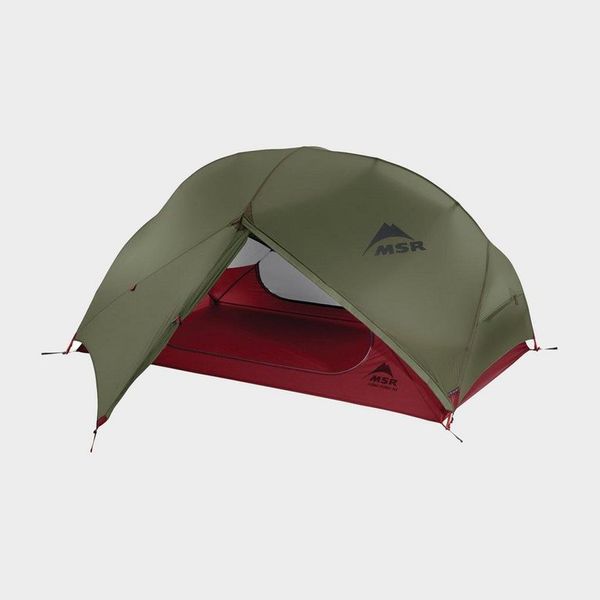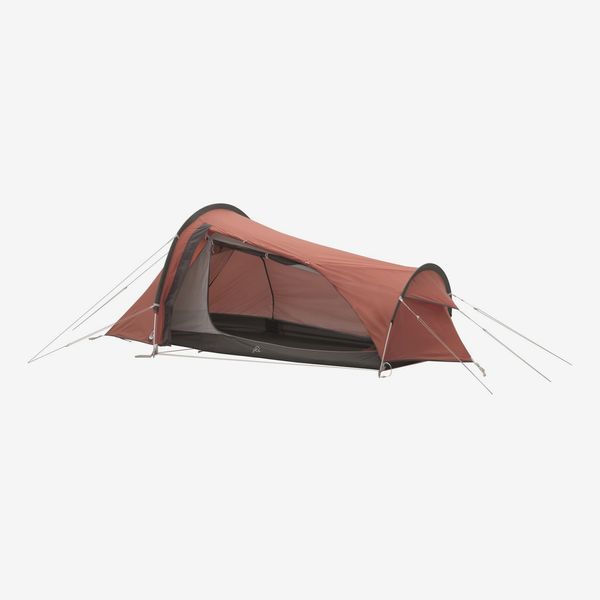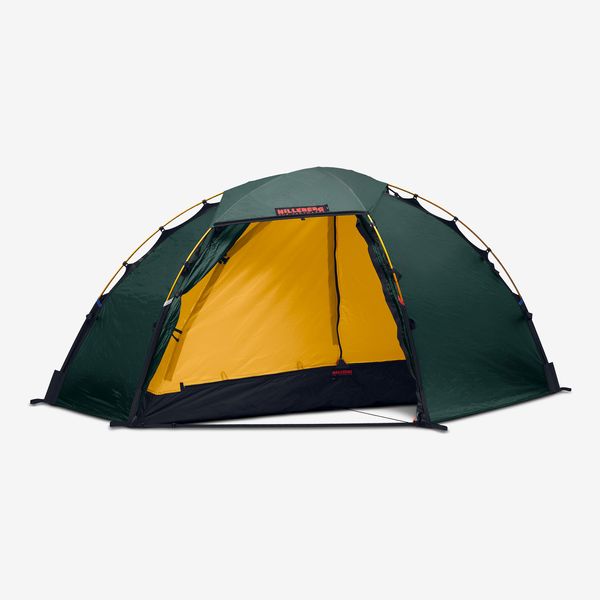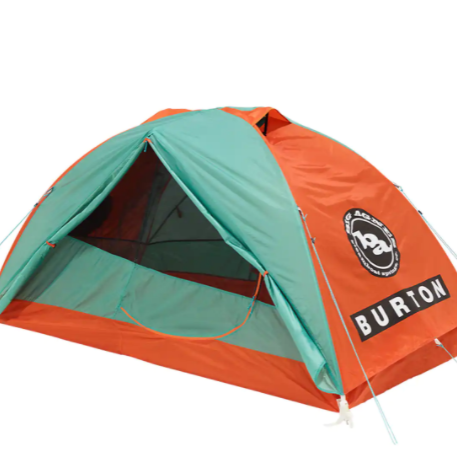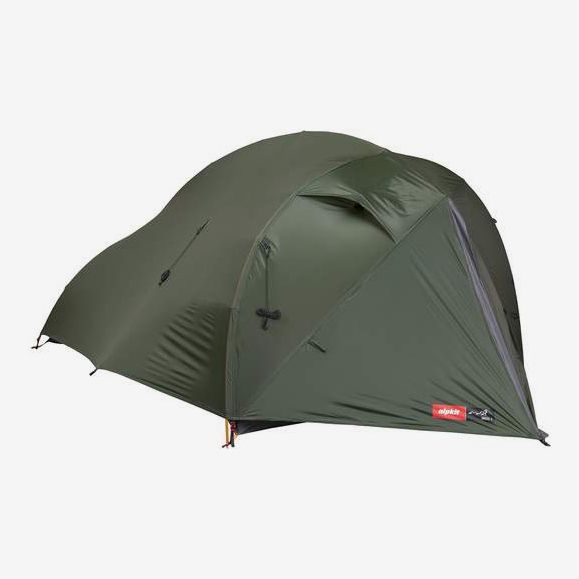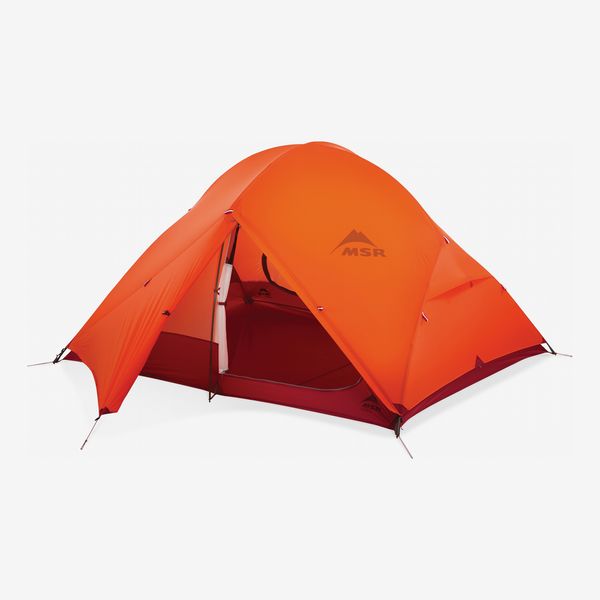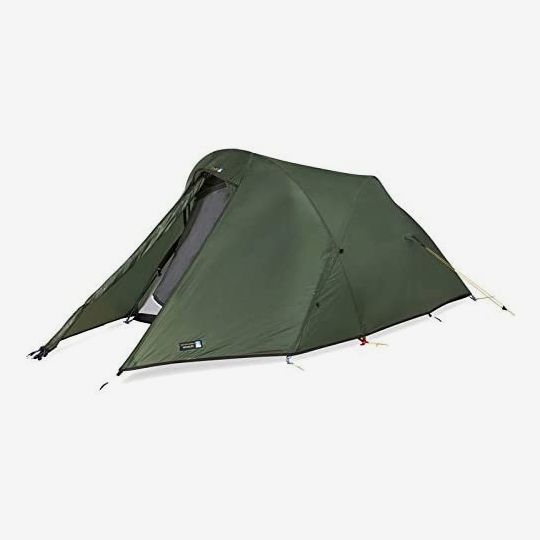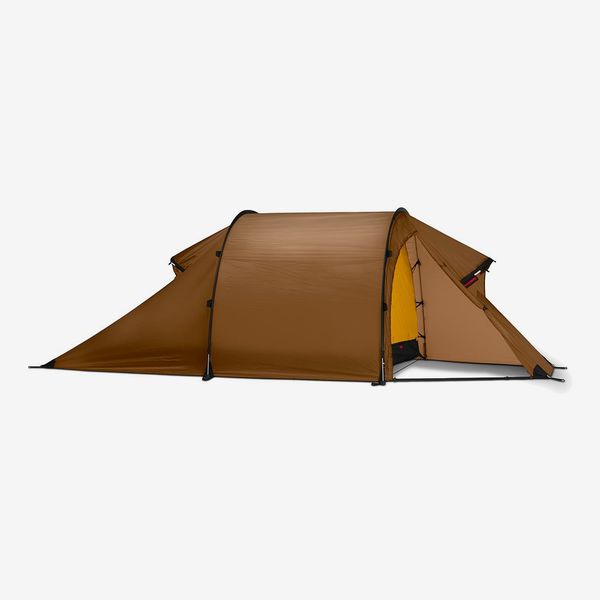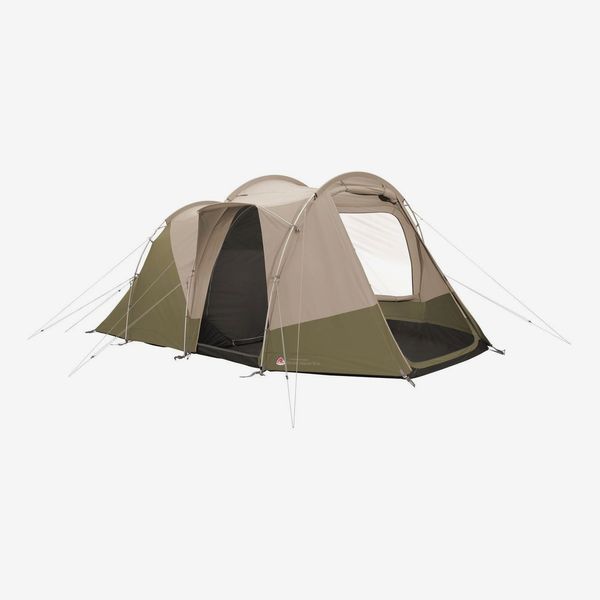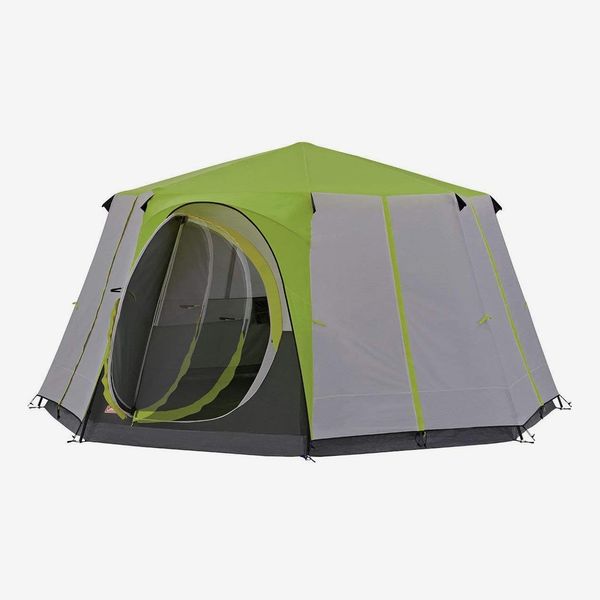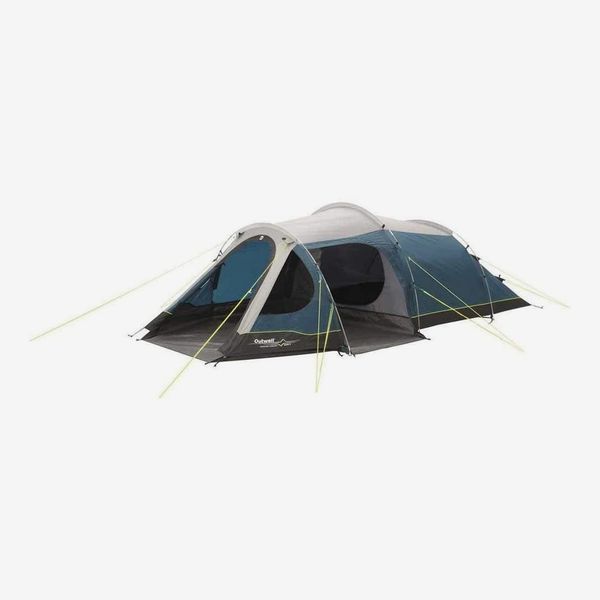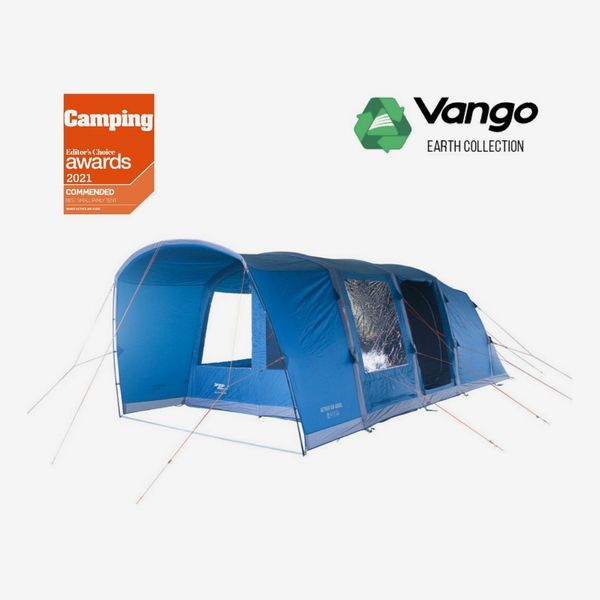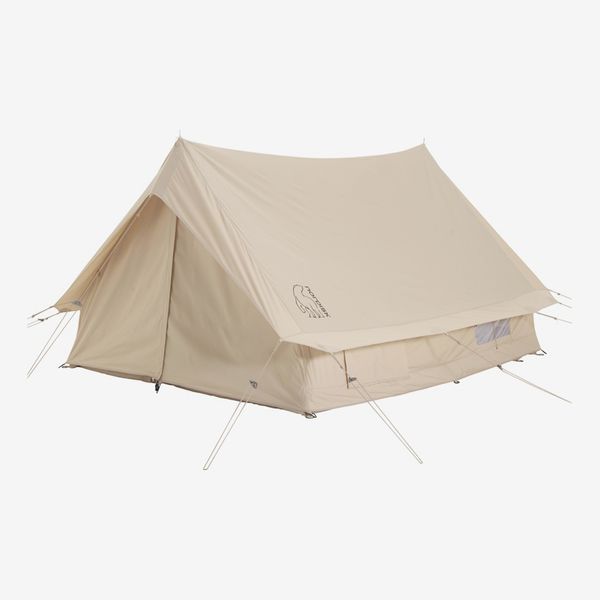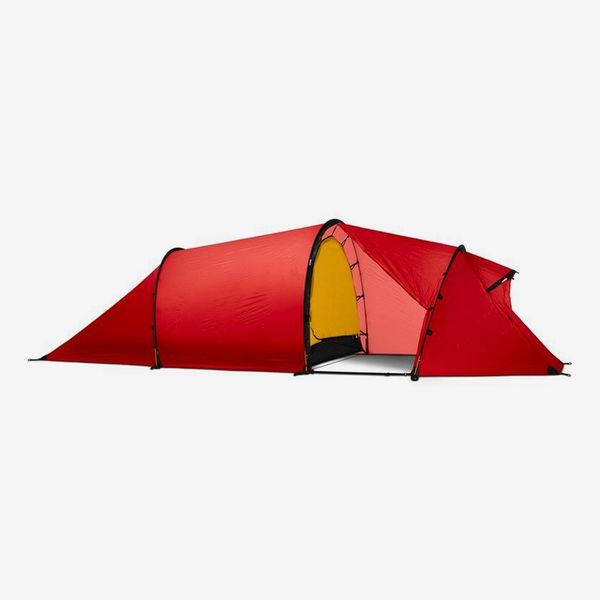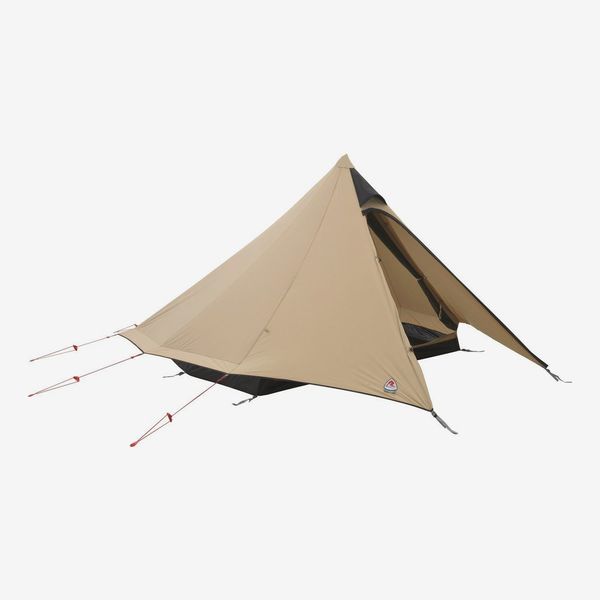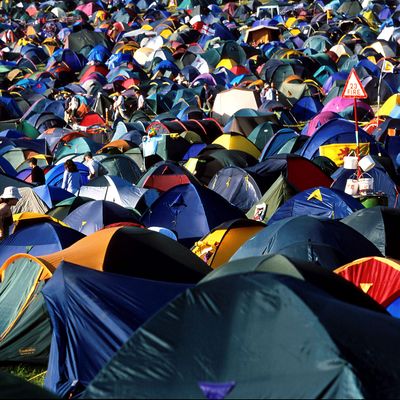
As we sketch out holiday plans that stay closer to home this summer, a holiday that involves venturing into the wilderness, forests, and hilly terrain might suddenly be on your radar. And with a camping holiday comes the right equipment, starting with shelter from temperamental weather. Whether the last time you camped was at Glastonbury, or if you’re looking to upgrade from a Vango or Alpkit to a Robens (or even a pricey Hilleberg), we chatted with seasoned campers and extreme-weather adventurers to find out the best tents for every type of camper. Read on for the best two-person, family-size, pop-up, and easy-pitch options.
Best tent overall
This was the top-recommended tent from hiker, biker, climber, and trail runner Joey Holmes, who also runs the Cool of the Wild blog, for its versatility, portability, and twin porch. Holmes says it’s “ideal for wild camping, bikepacking, and backpacking adventures.” Holmes also adds, “Despite its low weight and packability, it’s highly livable with enough space to easily sit up, and two porches to store gear in.” Founder of Black Girls Camping Trip, Tianna Johnson, told us this is her go-to for solo sleeping because “I’m plus-size, so it’s a lot more comfortable.” Award-winning author, travel writer, and explorer Emily Woodhouse, who also runs an adventure blog, vouches for this tent, too.
Lightweight and built to withstand adverse weather across the middle of the spectrum, this three-season tent from MSR is a good all-rounder. It has a non-tapered floor to maximise space and a special “stay dry” coating on the doors, as well as a cross-ventilating rainfly system. It has three adaptable components for different weather that you can choose to leave at home when you don’t need them.
Best one-person tents
If you’re stepping out solo, but new to outdoorsy trips and unsure if they’ll stick, Andy Halliday, co-founder of The Expert Camper, says this Robens tent is your go-to. It’s lightweight enough to just “chuck in your rucksacks and head for the hills,” while still offering protection from volatile British summer weather.
It’s purposely built to be easy to pitch, with a side entry and a sloping tunnel design that leaves enough room to stretch in the sleeping space (even vertically, sitting). The Arrow Head also comes with a porch area, pre-bent alloy poles, and vents at either end so you don’t wake up in a pool of condensation. Its HydroTex Core coating will keep rain at bay (from inner and external surfaces), apparently even in “heavy rainstorms,” according to the manufacturer, plus it’s UV-protected for glaring sun, too. And for easy, no-fuss access, it’s got a double-zip entrance system.
All the experts we spoke to that have direct experience with expeditions and extreme weather say Hilleberg is the gold standard. Stuart Adams is the founder of a company that rents out high-level equipment to people embarking on ventures in more dramatic climates. He says Hilleberg tents have “saved lives,” and this sentiment is echoed by expedition leader and filmmaker Charlie Smith, too. Adams also explains that while the price point is undeniably expensive, he’s seen Hilleberg tents last over 25 years.
As somebody who finds themselves in high-wind and wet climates often, he’s a fan of the Soulo four-season for one-person trips. The first person to ever cycle from the edge of the Antarctic continent to the South Pole, Welsh-born Maria Leijerstam, got by in this tent, too.
Best two-person tents
For a more aesthetically pleasing, dual-colour alternative to the MSR Hubba Hubba NX, Holmes says this tent is “very similar to the Hubba Hubba, but a bit more conspicuous.”
It’s ideal for use across three seasons, tape-seamed, and waterproof with two vestibules so there’s space for camping gear. It has two doors so you can enter and exit from either side without having to fall over the person next to you in the name of a late-night pee. It also has a few internal pockets for bits and bobs, gear loft loops, and night-vision reflective guidelines and headlamp webbing for safety visibility.
If weight is a sticking point for you, Devon-based adventurer and travel writer Kitiara Pascoe likes this ultra lightweight backpacking tent by Alpkit. It should fit two people “without lots of gear” comfortably, or one with more gear. At 1.4 kg, it’s basically a slightly larger-than-average bottle of water to carry. She points out that having an extra groundsheet handy for rough ground might be best if opting for this tent, though. It comes with guy ropes attached to keep the tent stable without struggling in heavy rain and wind. For the quality, price point and super-easy portability, Pascoe says it’s “an absolute bargain.”
Lead instructor at Original Outdoors adventure training in Wales, Richard Prideaux says this tent is ideal for giving two people “a little extra space” to faff with their clothing and equipment without feeling claustrophobic. He says that having extra space is also a way to forward-plan for potential poor weather where you might be stuck inside. He recommends going for the three-person version for two-people trips, as the Access 2 is probably too tight a fit in most cases. The Access 3 is specially designed to “work in awkward, tight spaces.” Prideaux’s is still going strong after three years, and “still performs as well as it did when new.”
Scouts ambassador and adventurer Dwayne Fields says this tent is a “solid base” for two people, because it’s “double-layered for keeping warmth in” and has a large vestibule area that makes “keeping wet gear away from your sleeping area” easy. He also says it’s lightweight, with great packability, plus that “anyone can set it up, it’s just three poles, and everything is colour-coordinated — the red poles go in the red holes and that’s it.” Fields even says you could potentially squeeze three people into it.
Best three-person tent
Like the sound of the Soulo but need it to fit a few friends? For your best bet at something bigger that will last and protect you from more aggressive weather, Adams suggests the Hilleberg Nammatj 3. It’s a three-pole easy pitch setup-wise, with a huge porch and a detachable inner lining “that can be used as a large shelter during the day.” He confirms it’s essentially a three-person version of the Soulo.
Best larger tents
At least three of our experts have mentioned Robens tents for their reliability, retro-look options, long-lasting builds, and wider range of price points. The upgraded version of her most trusty tent (the Robens Vista 400 tent), guidebook author and creator of the Ellie & Co travel blog, Ellie Seymour loves the nostalgic feel of this tent, because “canvas tents remind me of childhood camping holidays.” Made out of HydroTex polycotton (that apparently maintains a “microclimate” inside the tent), this tent sleeps four and is touted as suitable for all weather, though it really shines in warmer climates. Its rear and low vents get a good air-flow situation going on, along with mesh panels that keep insects away. It also comes with a zip-attached waterproof curtain, for surprise showers, and a PVC panel to control light and privacy. Seymour says that while this tent is pricy, it’s been everywhere with her, including a festival where a storm broke out, and it was the only tent left standing.
For larger groups on a budget, Coleman’s eight-person tent keeps things simple with one large octagonal space. It comes with external curtains and mesh coverings on the windows, plus a sewn-in groundsheet for waterproofing. And the flysheet can be removed completely for hot, dryer days. The entrance door is a half-moon shape with hinges, for novelty and easy access. Black Girls Camping Trip’s Johnson says while this tent is ideal for groups, it also works well when solo travelling as it makes it easier to “delegate space” for areas like “a hygiene corner or a reading corner.”
If you need a bit less space, you might be better off going for Outwell’s Earth Tent range. It comes in a five-person, three-person, and two-person option. Price-wise, it’s cost-effective — even the largest pick is sub £250. Halliday’s a fan for short countryside and campsite stays, but says it’s best to go for the version that’s one person bigger than what you need. He stresses that ease of setup and packing away is where this tent really stands out, and vouches for the three-person version as ideal for couples.
Best easy-pitch family tents
This Vango tent has inflatable poles that erect themselves (you do need to work the pump) after you attach the included pump to the valve ports. You might still need to push the beams into shape, though editor of the Camping With Style blog, Shell Robshaw-Bryan, says this shouldn’t take long at all.
She also explains that the Aether Air is made from recycled materials as part of Vango’s newly launched Earth range. She’s a “huge fan” of this one because it’s “much more stable and dependable than you might imagine,” versus a traditional pole-setup tent. Robshaw-Bryan also highlights the versatility of the Vango Aether Air 600XL because it “offers families plenty of space, while still managing a more affordable price point.”
For those embarking on family camping trips and want to throw in an element of nostalgia, Seymour is keen on Nordisk’s retro-style tents. It has a classic ridge design that’s reminiscent of ’70s scout trips, with a square steel-pole setup that’s pretty easy to pitch. Four people can comfortably sleep in this tent, with room to move about, and the polyester cotton-blend fabric makes it especially airy in warm weather (though it’s probably not your best bet for rain). The double entrance, with built-in groundsheet, makes it a good option for social campers, or just to get more air into the tent in humid weather. The two-window cutouts also come with built-in mosquito nets, so you don’t have to swelter through the night just to avoid bug bites.
It also looks quite luxe, in a vintage way, for those that might gear more toward the glamping side of wilderness stays. If you’re travelling light, you might want to leave this one at home, because at 13 kg, it’s not the lightest family tent around. But Seymour thinks it’s worth it for summer trips if transportation isn’t an issue.
Best tent for extreme weather
Adventurer and filmmaker Charlie Smith leads the Coldest Crossing Expedition Series and swears by this Hilleberg tent. Fitting two people comfortably, it weighs less than 3 kg, and can be pitched on uneven or flat ground (the manufacturer claims it can be pitched “anywhere”), as well as being suitable for most weather conditions, with storage room, too. Smith says it’s a well-ventilated option that won’t create a stuffy environment or leave you waking up to condensation dripping on your face in the morning in deeply cold weather.
He also explains that during storm conditions, it’s a godsend to be able to get up and get your dinner sorted without having to venture outside into extreme wind. While most of us will probably not be pitching up a tent in such extreme conditions, it’s comforting to know you can put the kettle on without having to stand in the rain. If you do fancy dipping your toes into more harrowing camping territory, though, this tent is purpose-built to withstand the supremest of winds. Smith points out that you just need to position it against the wind in the right direction, and since pitching a Saitaris isn’t the simplest of affairs, “you do need to know what you’re doing with these.”
The Saitaris is available in sand, green, red, and black, though Smith vehemently went for the red option as a safety precaution, because “if anything goes wrong, you can be spotted by help more easily.” And while it’s never let him down on his mostly cold-weather ventures, he says it’s a great option for all weather, because “it’s a tent that’s been everywhere, from the Antarctic to the Gobi desert, and the materials are second to none.”
Best luxury tent
While this isn’t one for light travellers, Pascoe says that if weight isn’t an issue, this tent is a great pick for luxury-style camping. Its single-layer design might leave you with questions, but Pascoe explains that this is actually its best feature thanks to its “borderline magic polycotton” that means it’s still “completely waterproof.” And while it will keep out rain, the single-layer design is also “breathable so you don’t wake up to a boiling tent,” which can be the case with nylon fabrics.
It’s roomy and most comfortable for two people, though four could fit without any issues, too. Pascoe says it’s the most comfortable tent she’s ever owned. Plus, it only requires a single pole for setup.
The Strategist UK is designed to surface the most useful, expert recommendations for things to buy across the vast e-commerce landscape. Read about who we are and what we do here. Our editors update links when possible, but note that deals can expire and all prices are subject to change.
